With the end of last year’s regular season, not only a postseason that culminated in the triumph of the Kansas City Chiefs began. It also meant the starting point for negotiating contract extensions between teams and their draft picks in the 2017 NFL Draft. This is a chance for teams to lock up their promising young stars for the foreseeable future and for those players to earn a large payday — something that those not chosen in the early first round haven’t enjoyed yet.
The Bears have already exercised their right and signed Eddie Jackson to a four-year $58.4 million contract extension. For Eddie Jackson, a fourth-round pick in 2017, this was a huge payday, as he has earned “only” $2.3 million so far in his three-year career. For the Bears, it supposedly means great coverage over the next five years. In this article, we want to shed light on Jackson's extension, but more importantly, highlight other players from the 2017 draft class who deserve to be extended this offseason. While first-rounders will also appear, the focus is on Day 2 and Day 3 picks, since teams don’t have the opportunity to exercise the fifth-year option for them and they have earned a lot less money up to this point than first-rounders. We will start with the defensive side of the ball and assess young offensive talents tomorrow.
Quantifying confidence is important for early extensions
When a team has to decide whether to extend a player after three years, the main question is to balance between the advantage of signing the play under a potentially team-friendlier contract and the disadvantage of not having another year to evaluate said player. This is why confidence and the distribution of future outcomes should be major factors in the decision. Regular readers already know that our go-to method to quantify these two things is a Bayesian approach. In short, the forecast of what a player might be able to contribute in the future isn’t given by a point estimate but rather by a distribution, dependent on a posterior mean and a posterior standard deviation. The proximity of the posterior mean to the actual observed results in the first three years is dependent on the sample size (a three-year player who has contributed since day one of his rookie year inspires more confident than a player who didn’t start before year two), but also the consistency of his performance (An up-and-down player will have a larger range of outcomes than a consistently good player).
The second method we will use comes from the work of our own Kevin Cole, who has created a framework to predict the range of possible outcomes in terms of PFF WAR (wins above replacement) for a player based on comparisons to historical players. Additionally, he has laid the foundation to translate such a forecast into a suggested salary. Kevin has already started a series on assessing the value of free agents, and this article presents an opportunity to apply it to younger players.
Eddie Jackson’s contract looks like a bargain
Eddie Jackson couldn’t quite hold his otherworldly level from 2018, just as George Chahrouri predicted before the start of the 2019 season, but he was still fairly good and is expected to at least hold his level in the future.
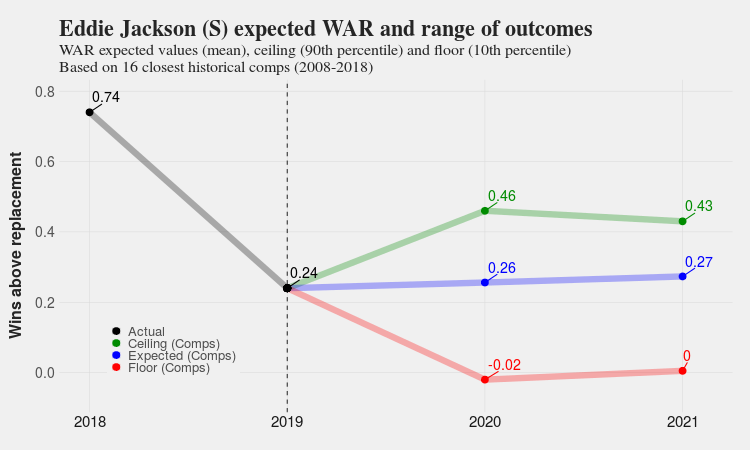
His expected WAR of 0.53 over the next two years would translate to a contract with an average annual salary of almost $19 million, well above the roughly $15 million he will get over the next four years.
| WAR 2017-19 | WAR 2020 | WAR 2021 | Salary ‘20 | Salary ‘21 | APY |
| 1.20 | 0.26 | 0.27 | $17.8M | $19.9M | $18.8M |
WAR and salary forecast for Eddie Jackson
Jackson’s 93.7 coverage grade is the sixth best among all safeties since 2017, and he is just fine against the run with a 71.9 run-defense grade. Our Bayesian forecast of his coverage abilities shows how he quickly outperformed his low prior after being drafted in the fourth round, but also his regression in year three. An expected outcome almost in the 90th percentile among safeties is still enough to work with in the future, especially since there is only a very low chance he ends up below average. Paying him long before he could enter free agency looks like a very solid move by the Bears as of today.
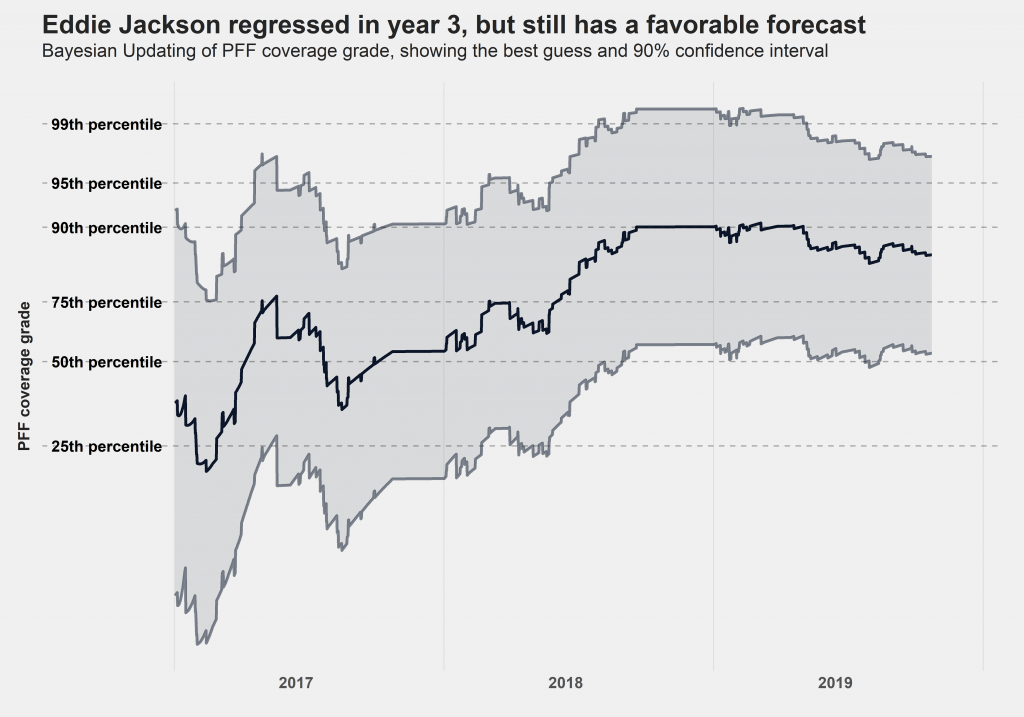
CB Tre’Davious White, 27th overall pick, Buffalo Bills
According to our coverage grades, Tre’Davious White hasn’t been the best cornerback of the 2017 class, as his 85.3 coverage grade since 2017 is bested by Marlon Humphrey’s 87.1. However, we’ve decided to favor late first-round picks, since they haven’t made as much money up to this point in their career. This is why we should note that both Humphrey and Marshon Lattimore could be featured here and would get evaluated pretty similarly.
White’s Bayesian forecast looks very much like Jackson’s: His expectation is just below the 90th percentile among cornerbacks, he has a reasonable chance to end up in the 95th percentile and he is almost certainly better than average.
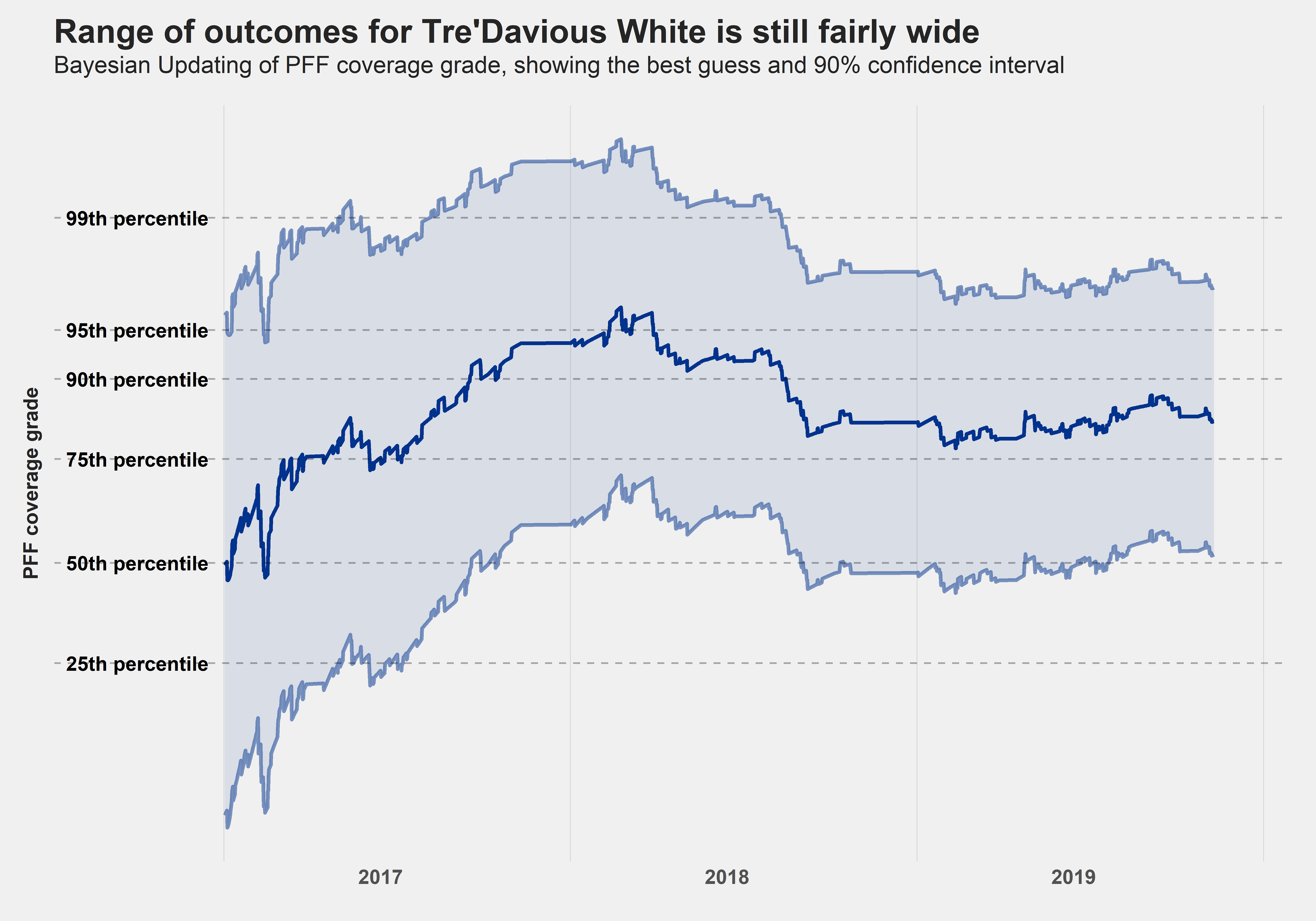
However, White peaked after his rookie year and regressed a bit in year two. The encouraging news is that he stabilized in year three and was an important contributor to a Bills' defense that overcame below-average quarterback play to reach the playoffs for the second time in three years and almost pulled off an upset against the favored Houston Texans in the Wild-Card round.
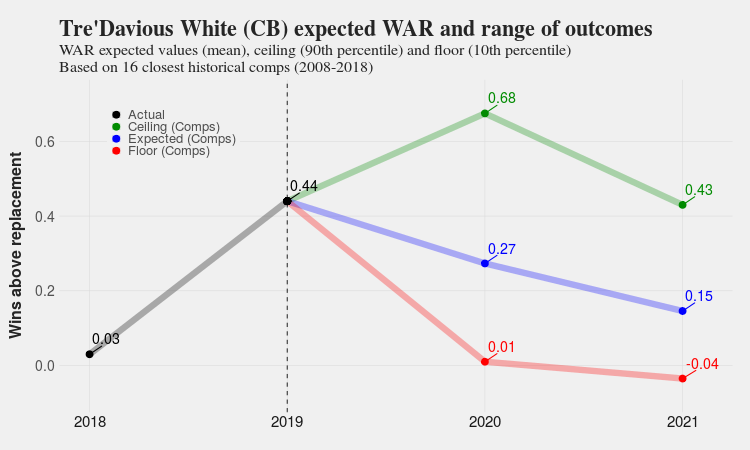
His WAR forecast sees a dropoff in 2021, mainly because he is closely compared to players such as Ronald Darby and Xavier Rhodes who regressed in 2019 and 2018, respectively. This is not necessarily White’s faith, so the Bills should consider happily paying him the suggested $15 million per year, a figure that might not be realistic if they wait another year.
| WAR 2017-19 | WAR 2020 | WAR 2021 | Salary ‘20 | Salary ‘21 | APY |
| 1.21 | 0.27 | 0.15 | $18.5M | $11.0M | $14.8M |
WAR and salary forecast for Tre’Davious White
Edge T.J. Watt, 30th overall pick, Pittsburgh Steelers
After Myles Garrett swung his way into a suspension, T.J Watt is left as the only member of a then-promising class of edge rushers who has proven to be an upper-class pass rusher in the NFL. His 90.7 pass-rush grade is the fifth-highest among all edge rushers since 2017 and he isn’t a liability against the run, either, as his 84.0 run-defense grade ranks 15th in the same timeframe. Our Bayesian forecast for him looks very favorable — the best estimate for him is 95th percentile after he made huge strides in both Year 2 and Year 3.
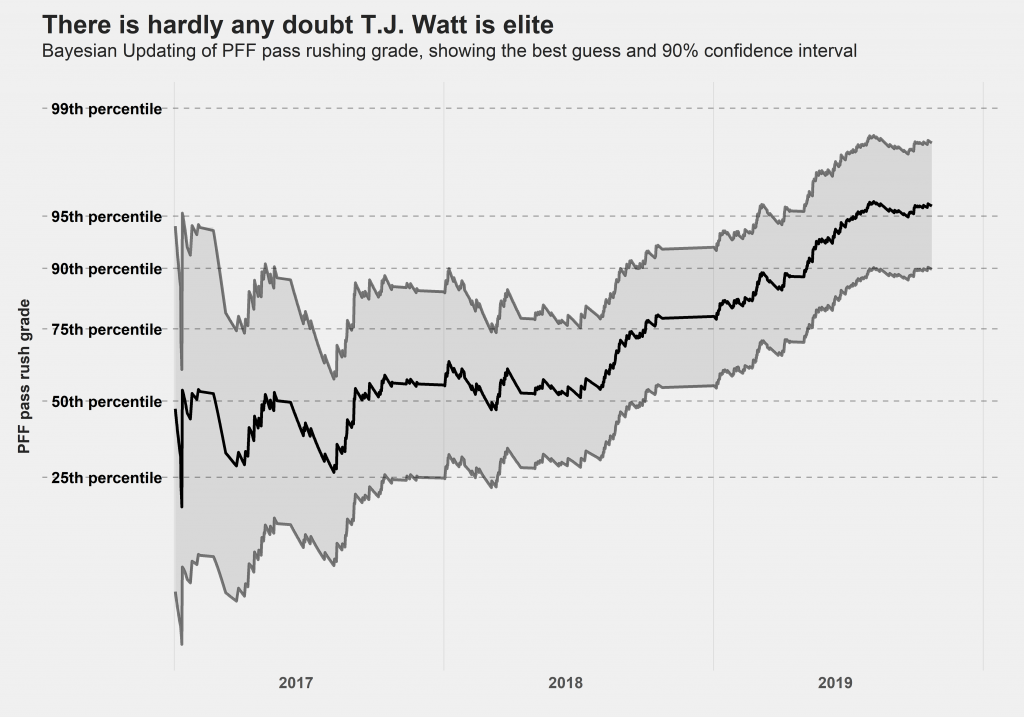
As opposed to coverage, pass-rushing performance is fairly stable and this translates into a much smaller range of outcomes for pass rushers after three years. Based on our forecast, there is only a 5% chance he ends up below the 90th percentile, a risk one should take in a heartbeat when given the chance to lock up an elite edge rusher before he even thinks about free agency.

His wins above replacement value is supposed to regress from the extremely high figure in 2019, but he is still expected to produce at a high level, and with Von Miller, Justin Houston and Demarcus Lawrence, he has close comparisons that no one would shy away from.
His WAR forecast translates to an average annual salary of $13.4 million over the next two years, but we expect him to sign a larger contract. Our PFF WAR numbers for pass rushers are fairly low because it turned out pass-rushing performance has a lower correlation to wins than one might think. Nevertheless, it’s reasonable to pay some extra dollars for the consistency of pass rushers, as their floor is much higher than for coverage players.
| WAR 2017-19 | WAR 2020 forecast | WAR 2021 forecast | Salary ‘20 | Salary ‘21 | APY |
| 0.65 | 0.22 | 0.16 | $15.0M | $11.8M | $13.4M |
WAR and salary forecast for T.J. Watt
S Marcus Williams, 42nd overall pick, New Orleans Saints and S John Johnson III, 91st overall pick, Los Angeles Rams
Marcus Williams and John Johnson III have both been elite in coverage with grades of 93.5 and 90.6, respectively, since 2017. Williams is the more complete player and is also shining in run defense (88.6 grade) from the free safety position, while Johnson, who moves around more and splits between free safety and box alignments almost 50-50, hasn’t shown to be extraordinary against the run, as his middling 70.6 run-defense grade indicates.
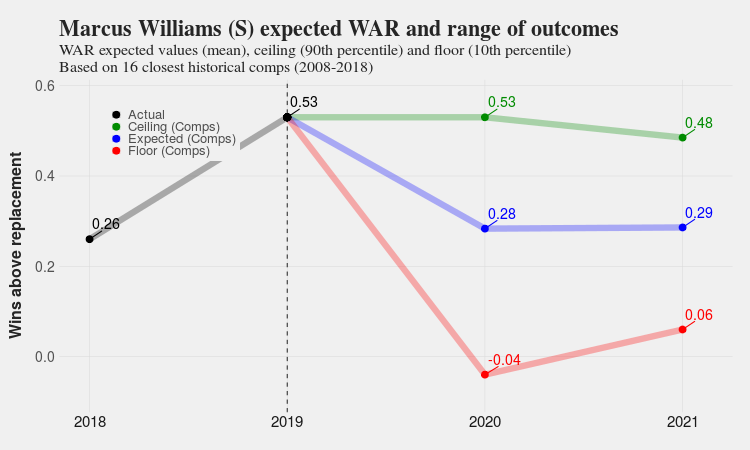
Consequently, Williams is forecasted to be better going forward and is expected to be among the most valuable defenders. Looking back, he has already earned 1.28 wins above replacement since coming into the league and has been the second most valuable defender of the 2017 class behind only Jamal Adams, whom we don’t feature here because of his high draft stock.
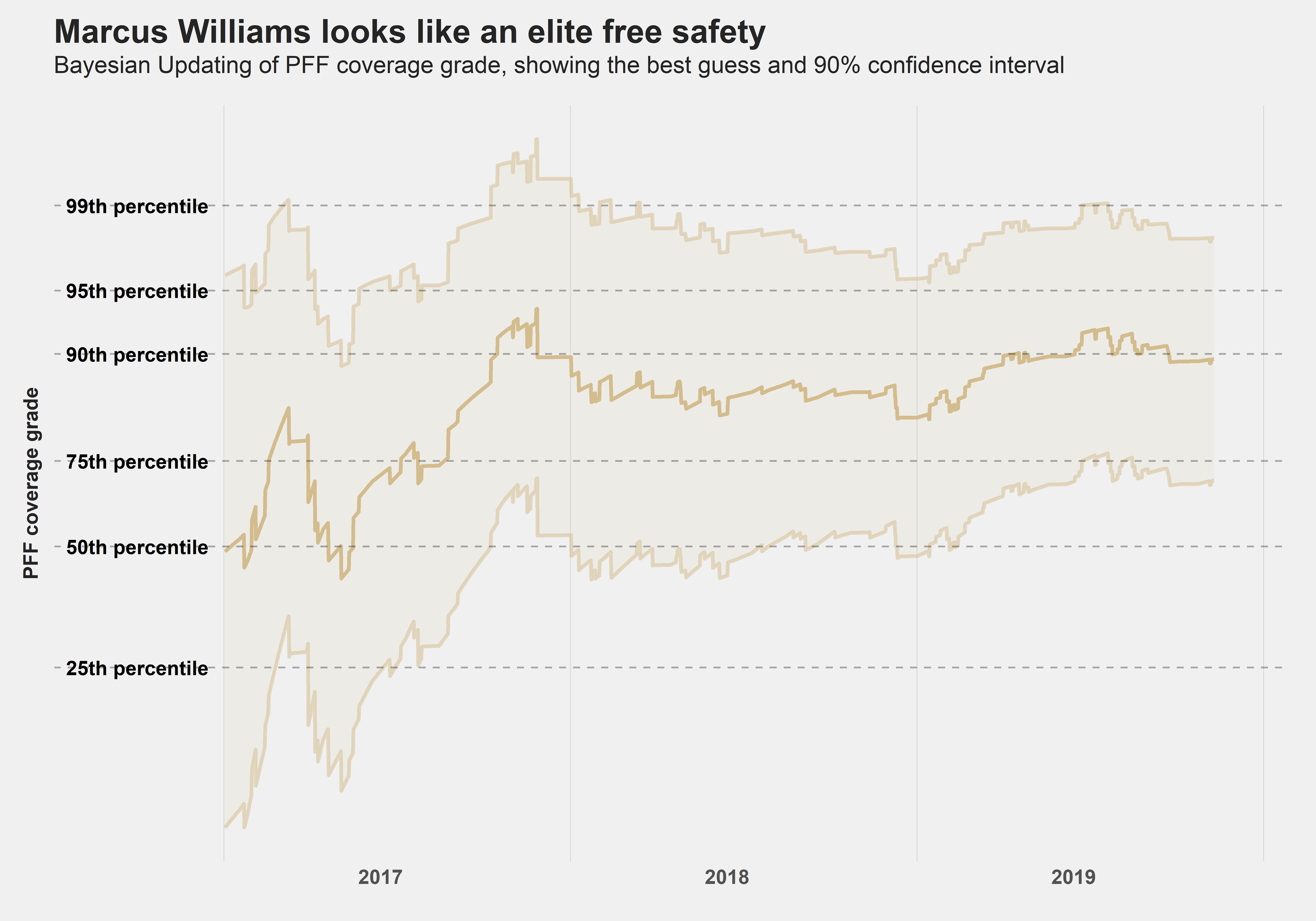
Williams has an even higher expectation than Eddie Jackson and, most importantly, his floor lies in the 70th percentile, well above average. This stems from the fact that Williams has been more consistent than Jackson through their first three years. One of Williams’ top comparisons is Earl Thomas — this might be all the Saints need to know to make a decision on him this offseason.
Johnson is an interesting case because he didn't contribute much in 2019 due to an injury, yet he is expected to bounce back in 2020 and be only slightly worse than Williams and Jackson going forward.
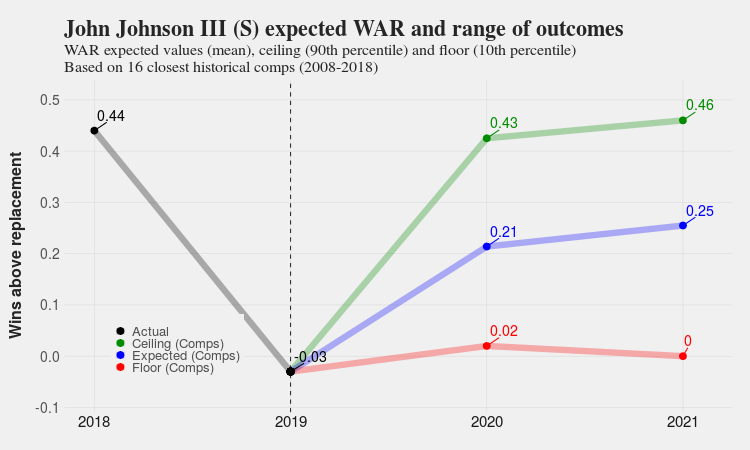
This potentially presents a buy-low opportunity for the Rams, something they are sorely in need of after handing out huge contracts to Todd Gurley, Jared Goff and Aaron Donald. Johnson is forecasted to be worth $16.4 million per year over the next two years, but we imagine he could be signed to a lower contract after coming off an injury.
| WAR 2017-19 | WAR 2020 | WAR 2021 | Salary ‘20 | Salary ‘21 | APY | |
| Williams | 1.28 | 0.28 | 0.29 | $19.2 | $21.3 | $20.2M |
| Johnson | 0.80 | 0.21 | 0.25 | $14.4M | $18.4M | $16.4M |
WAR and salary forecast for Marcus Williams and John Johnson III
If they pull the trigger, they lock up a versatile safety who is projected to be in the 85th percentile at his position going forward, still has a lot of upside and provides only a small risk of performing only at an average level in the future.
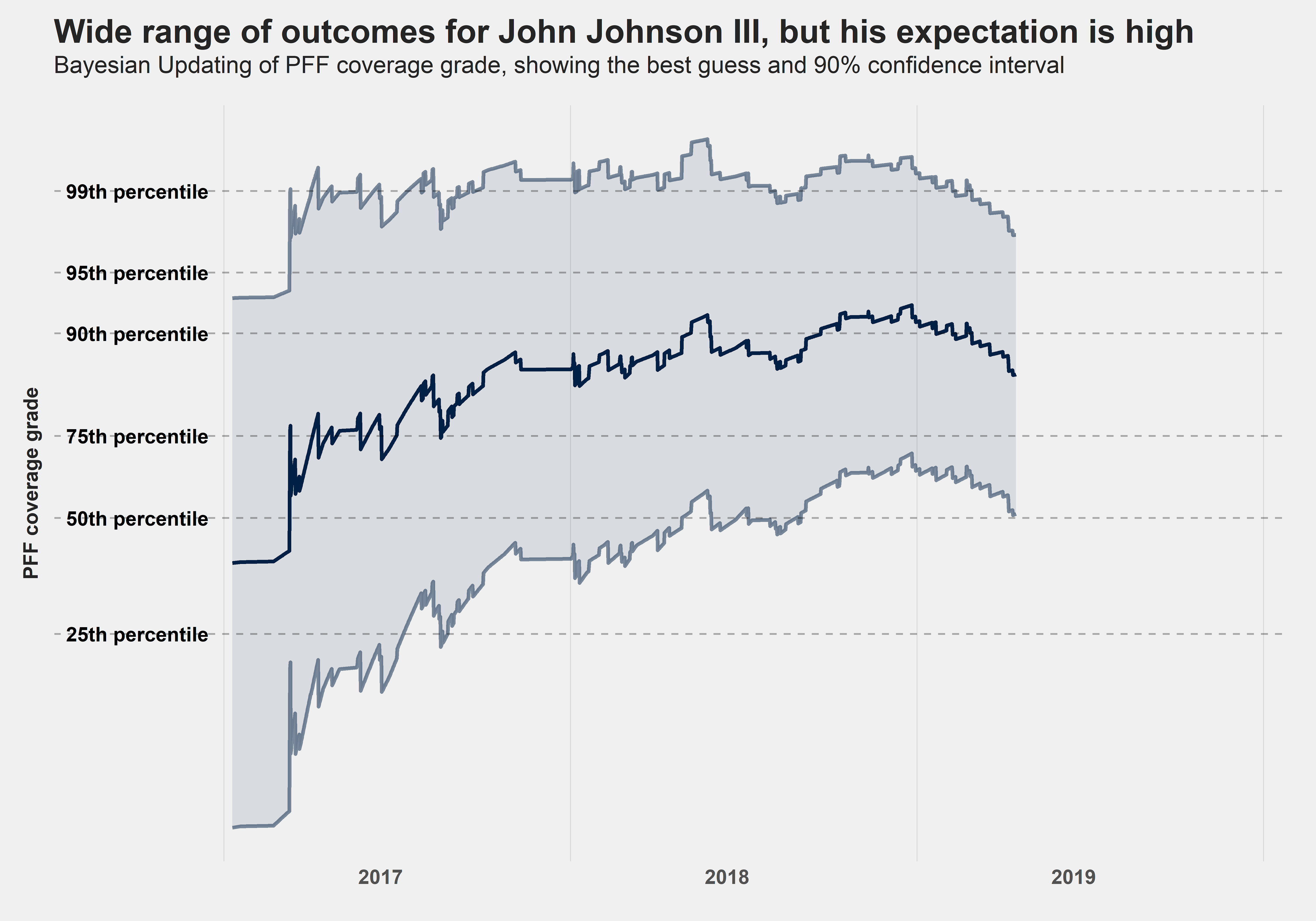
CB Desmond King II, 151st overall pick, Los Angeles Chargers
Desmond King II was selected in the fifth round, and we can’t help but think a lot of teams wish they had pulled the trigger on him earlier. His 91.3 coverage grade since being drafted is undoubtedly elite and is bested only by Stephon Gilmore and his teammate Casey Hayward. Consequently, our Bayesian forecast expects him in the 95th percentile, with the 70th percentile being his floor and the 98th percentile still a reasonable ceiling.
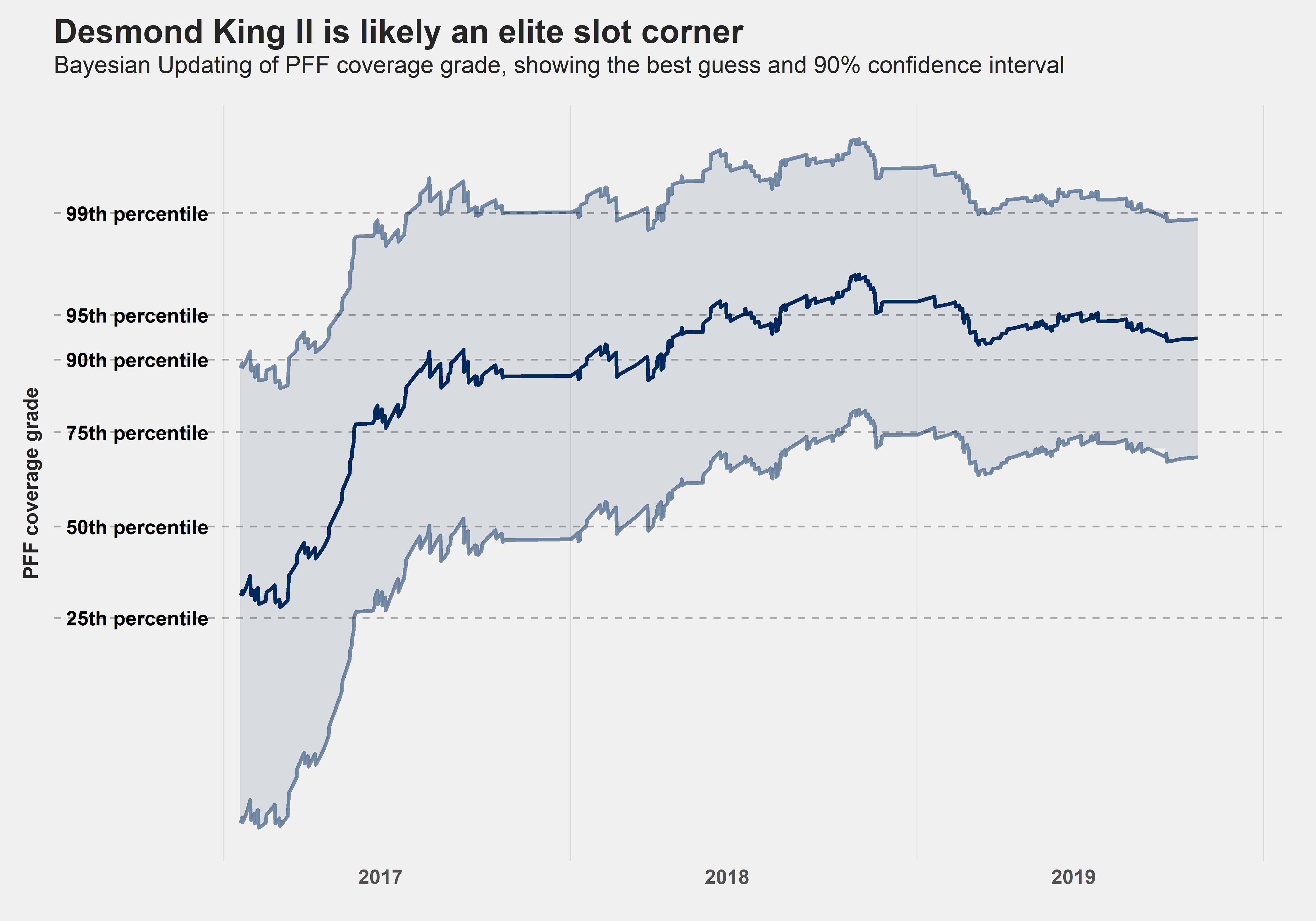
We’ve learned that such a high floor is extraordinary after only three years of play for a cornerback, so there is no reason for the Chargers to risk losing him to free agency or create a potentially toxic holdout situation.
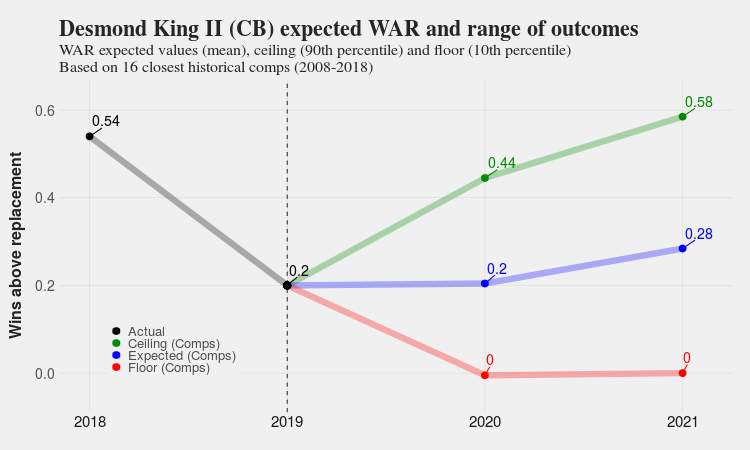
King’s WAR forecast is even higher than Tre’Davious White’s, and the Chargers should let him set the market for slot cornerbacks before anyone else does it. Because as of now, it seems possible to get him under contract for less than the proposed $17 million per year, a signing that could possibly turn into a bargain in the coming years.
| WAR 2017-19 | WAR 2020 | WAR 2021 | Salary ‘20 | Salary ‘21 | APY |
| 1.18 | 0.2 | 0.28 | $13.7M | $20.6M | $17.2M |
WAR and salary forecast for Desmond King II
LB Matt Milano, 163rd overall pick, Buffalo Bills
Matt Milano might be an under-the-radar candidate, as he was a late-round pick in 2017 and has been underwhelming against the run, posting a mere 53.9 run defense grade that ranks 55th of 69 linebackers with at least 500 run-defense snaps since 2017. Run defense is still considered to be the basic skill of a linebacker, but an every-down linebacker plays much more coverage than run defense in today’s league, and being good in coverage is mostly where the value of a linebacker comes from. Buffalo’s weakside linebacker excels in coverage, as his 83.6 coverage grade ranks sixth since 2017. This means he joins Corey Littleton as the best of the rest behind the (former) Big Four of Lavonte David, Luke Kuechly, Deion Jones and Bobby Wagner when it comes to stopping the pass.
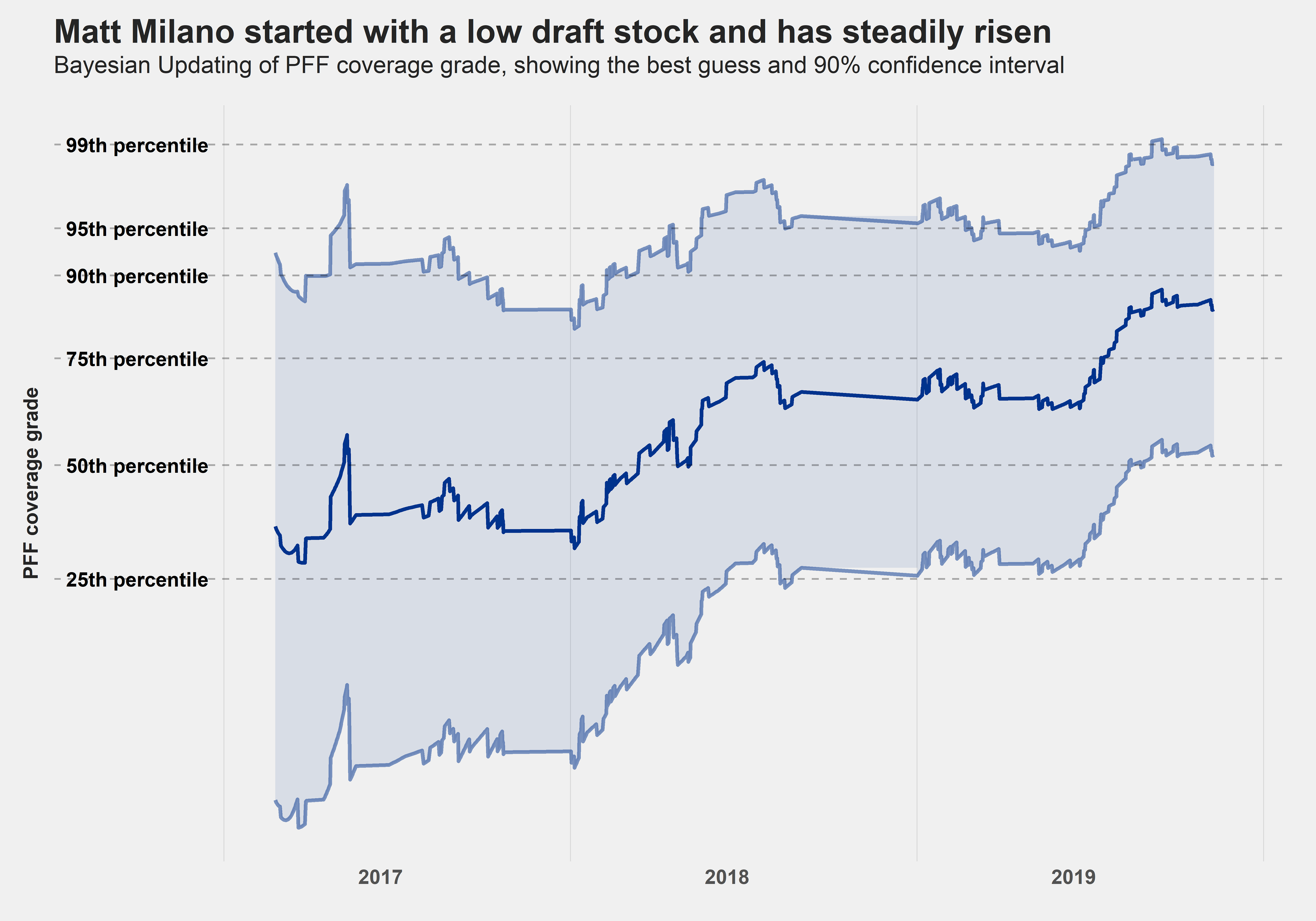
Our Bayesian forecast shows that Milano has made his weak draft stock long forgotten and is expected to end up in the 90th percentile among linebackers in terms of coverage ability.
A compelling reason for the Bills to pull the trigger is that they’ve accomplished something the league is generally bad at: Finding a linebacker who can cover.
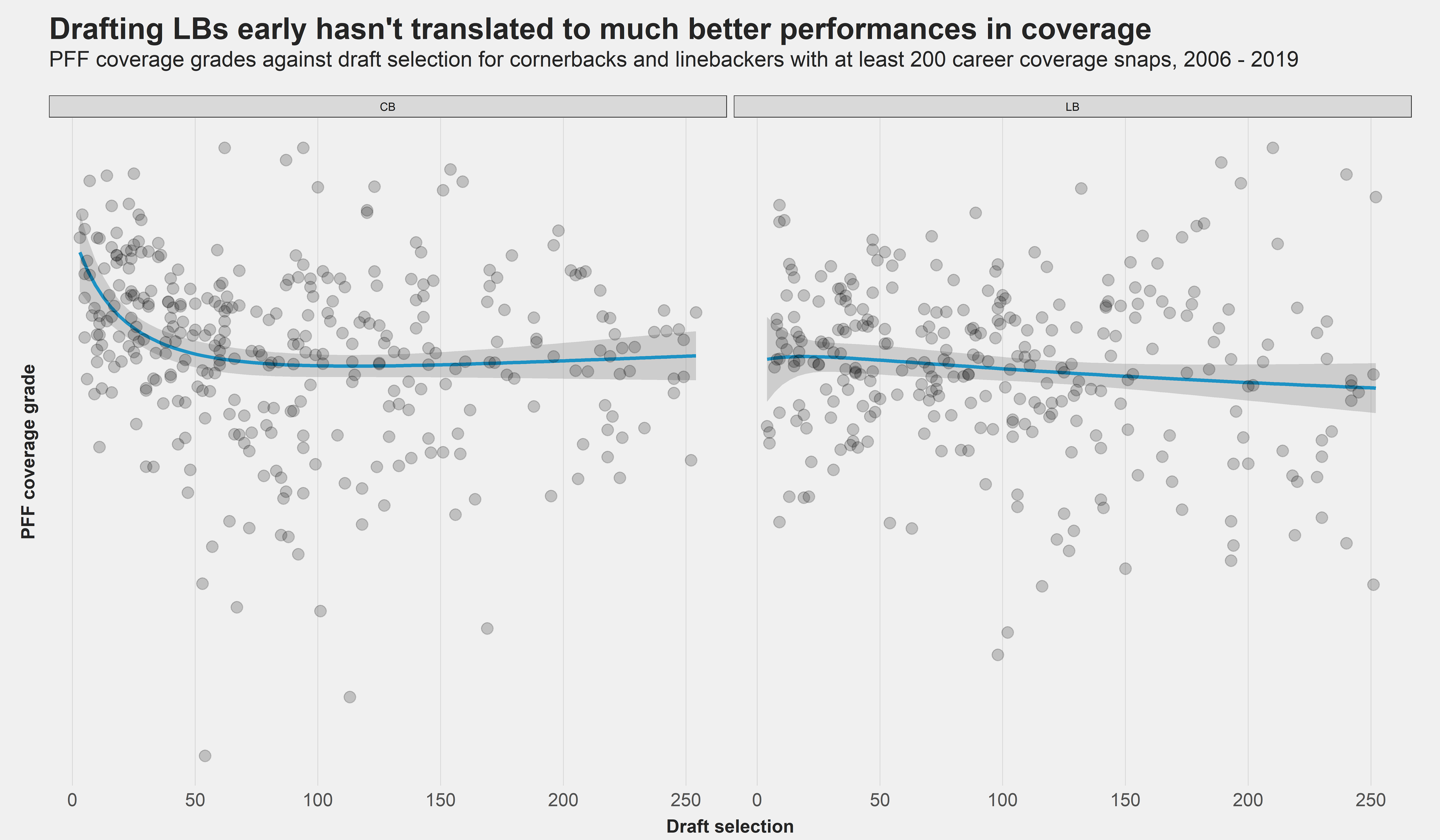
Since 2006, teams have been really bad at finding good coverage linebackers, as we can hardly find a difference between linebackers drafted in the top 10 or in the third round. For the sake of comparison, teams have been able to identify better cornerbacks in the first two rounds until the curve flattens out, suggesting day three of the draft is a crapshoot, anyway. Given that finding a linebacker who excels in coverage has been historically a crapshoot for teams even in the first rounds, you might as well lock one up when you’ve found one.
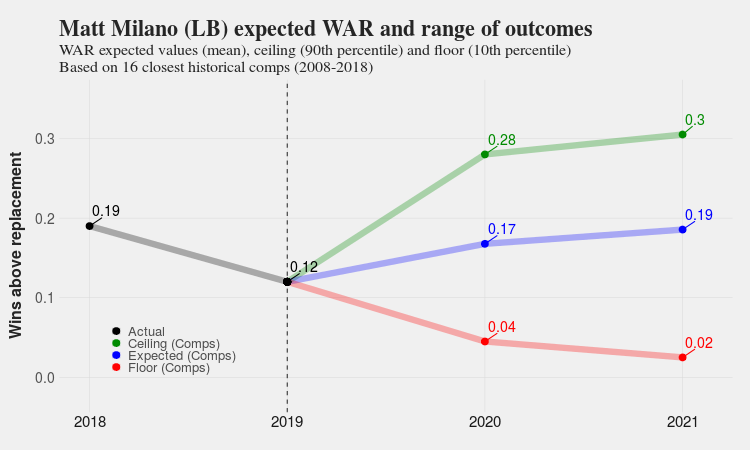
The suggested salary for Milano is an APY of $12.8 million, but given his weakness against the run, it could be that his market value is actually slightly lower, allowing the Bills to sign a valuable piece in coverage for potentially small money.
| WAR 2017-19 | WAR 2020 | WAR 2021 | Salary ‘20 | Salary ‘21 | APY |
| 0.37 | 0.17 | 0.19 | $11.6M | $14.0M | $12.8M |
WAR and salary forecast for Matt Milano
Conclusion
The 2017 draft class has featured a disappointing group of pass rushers, with T.J. Watt being the only sack artist worthy of a large extension this offseason. However, Watt is the safest player of the class because players who excel at rushing the passer will usually stay at a high level for a long time. The defensive backs look more promising, with a lot of successful first-rounders and Desmond King and Marcus Williams being the safest bets for the future among the later picks. However, due to the volatility of coverage performance, the risk that a defensive back follows the career arc of Xavier Rhodes is always present. With the market for defensive backs being relatively low compared to pass rushers right now, there is still a lot of value to be found in extending a promising coverage player early.
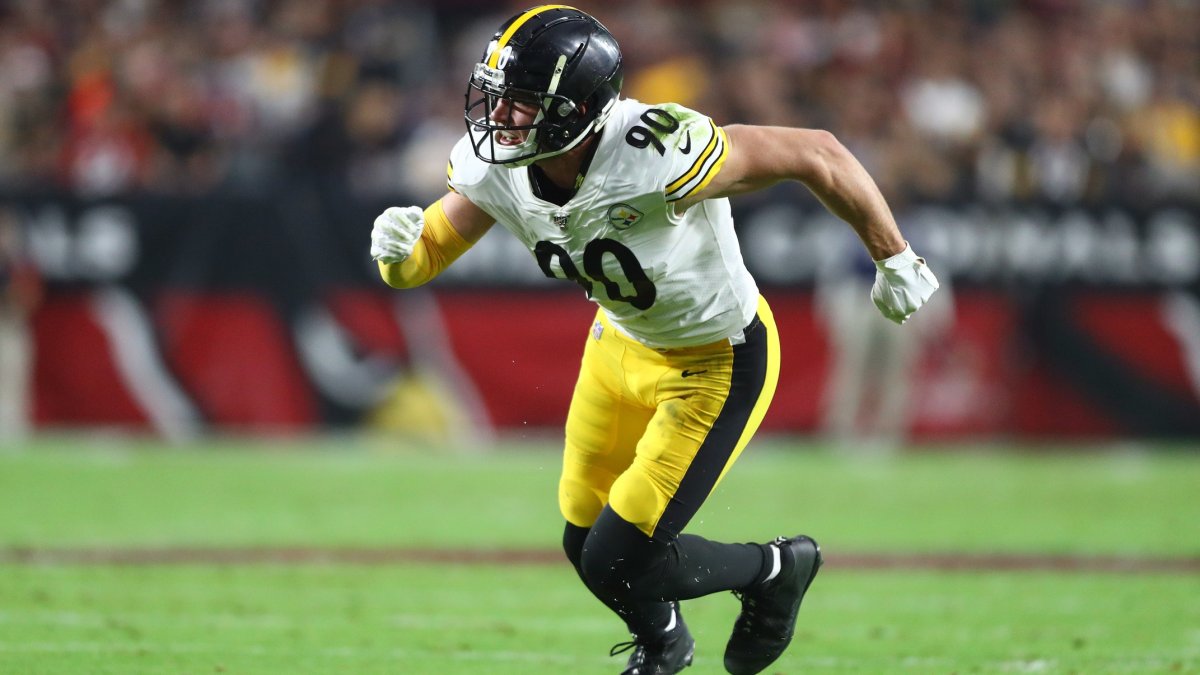


 © 2025 PFF - all rights reserved.
© 2025 PFF - all rights reserved.